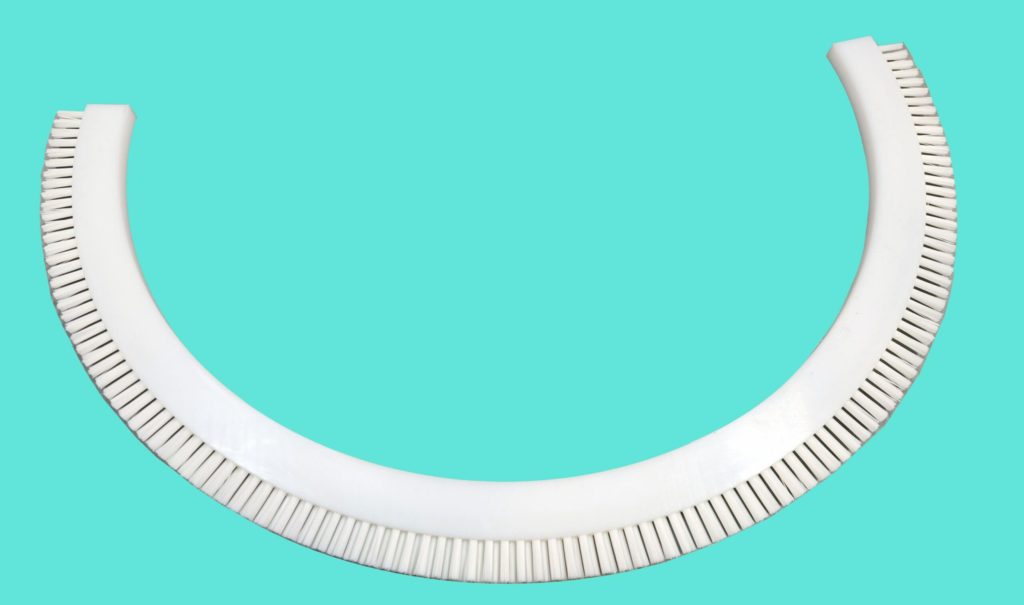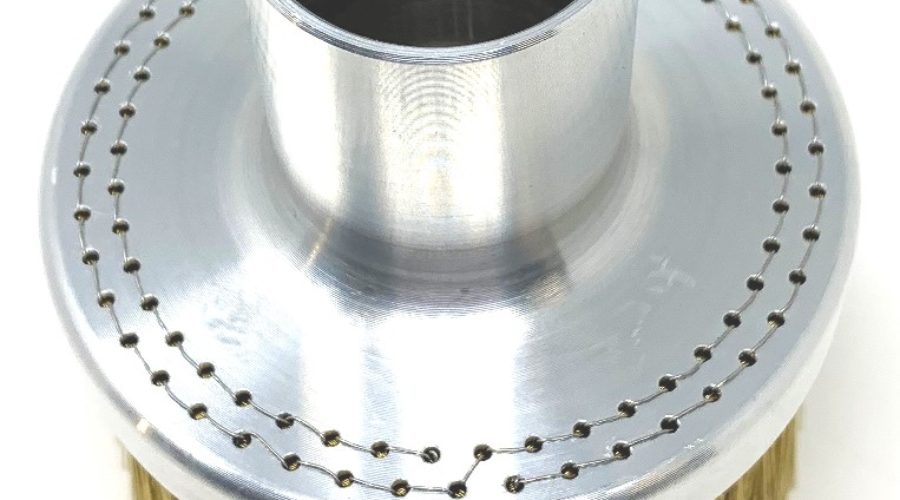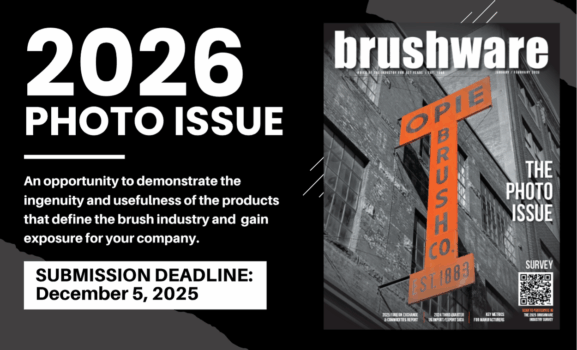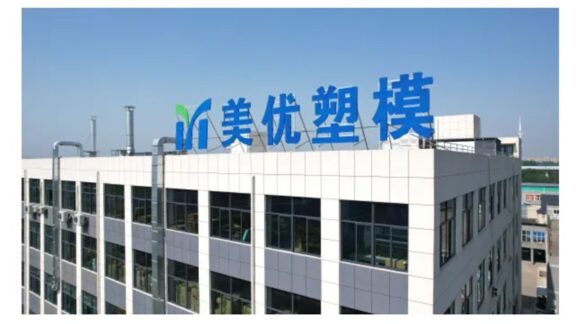Industrial Brush Update Part 2: Customization and Market Conditions

By Bob Lawrence
Given that industrial brushes are ubiquitous in numerous industries, from automotive and aerospace to robotics, automation and food processing, it’s not surprising that its market share is enormous in the multi-billion dollar global brush industry. In a 2022 analysis by India-based Maximize Market Research, it was reported that the global industrial brush market size was valued at US $654.72 million, with total revenue expected to grow at an 8.5 percent compound annual growth rate (CAGR) from now to 2029. During that period, the firm projects that the industrial brush market size should reach $1.16 billion. Factors driving this steady, robust growth include increasing demand from the manufacturing industry for brushes used in such applications as surface finishing, cleaning, and deburring and demand for specialized, custom-made brushes for automation and robotic equipment, 3D printing, and other end-user requirements.
None of this is news to those involved in industrial brush manufacturing; they are in the thick of providing products and services to their customers. To gain insight from the ground floor, Brushware sought and received answers to the following questions from those involved in the sector. In Part 2, the Q&A focuses on external business conditions and future plans. (See Part 1)
Are your industrial brushes customizable to meet specific client needs? If so, what customization options are available?
Jim Benjamin, President, Precision Brush, Solon, Ohio: Yes, customizable is what we do best. About 95 percent of what we manufacture is custom to a unique application or customer’s specification.
Alessandro Acquaderni, CEO of SITBRUSH, Bologna, Italy: Half of what we do involves customization, ranging from small changes in filament size to entirely new brushes engineered according to customer specifications, in collaboration with both the customer and the machine manufacturer.
Ken Rakusin, President & Chief Executive Officer, Gordon Brush, USA, City of Industry, California: Gordon Brush is a leader in making custom brushes for thousands of different customers and applications. We’ve sent brushes to the moon and Mars, saved the U.S. Army over $1.5 billion in engineering a brush to vastly extend the lifespan of the big gun on the Abrams tank, created brushes that the Bureau of Engraving use to print our U.S. currency and thousands of other applications. As we’re proud to say, “We’re Americans, We can do anything.”
Gonzalo Martinez, President and CEO, Schaefer Brush: We understand that every application is unique, and we pride ourselves on our ability to tailor our products accordingly. Our most common customization options include adjusting the dimensions and configurations of our brushes to fit specific equipment or application requirements. Clients have the option to choose from a variety of brush materials, including nylon, natural fibers, metal wire and more, depending on the desired durability, abrasion resistance and other performance factors. We offer a range of filament types, such as crimped, flagged, abrasive or conductive filaments to suit different brushing needs. Clients can specify the density and length of brush filaments to achieve the desired brushing effect and coverage. We provide various mounting options, including shafts, handles or custom attachments to ensure easy integration into existing equipment or systems. Clients can request additional features such as anti-static properties, chemical resistance or specialized coatings to meet specific environmental or operational requirements. In addition to offering customizable industrial brushes, we have the capability to design complete engineered solutions to meet our customer demands. This includes not only tailoring individual brush components but also integrating them into comprehensive systems optimized for specific applications. Our engineering team collaborates closely with clients to understand their unique requirements and challenges, developing innovative solutions that address their needs effectively. Whether it’s designing brush systems for complex machinery or creating specialized brush configurations for unique applications, we leverage our expertise and resources to deliver tailored solutions that exceed customer expectations.

CEO Lance Cheney, Braun Brush Company, Albertson, New York: Our industrial brushes are highly customizable to meet the precise needs of our clients. In fact, two-thirds of our products shipped are tailored specifically to customer specifications. We excel in creating brushes that perfectly align with our clients’ exact requirements. Our customization options are virtually limitless, encompassing the use of any materials at our disposal. Furthermore, we are committed to innovation; we have developed new manufacturing methods specifically for certain projects to ensure that the final product meets the unique demands of our customers.
Can you provide examples of any innovative or specialized industrial brushes your company has developed to solve specific industry challenges?
Cheney: Certainly, our company has been at the forefront of developing innovative and specialized industrial brushes to address unique challenges across various industries. For example, we designed brushes capable of removing machining debris from pipes located 10,000 feet underground, a testament to our ability to provide solutions for extreme conditions. In the realm of marine technology, we’ve crafted brushes specifically to eliminate biofilm from critical components on unmanned underwater vehicles, ensuring their operational integrity in challenging marine environments.
Furthermore, in the medical field, we’ve developed brushes used in surgical procedures for knee and hip replacements, highlighting our commitment to precision and safety. These examples, from our recent projects, showcase our efforts to meet the unique needs of various industries through specialized solutions.
Martinez: Our channel sweep solutions are an innovative response to a need in many industries that utilize chain conveyor systems. These systems are installed in-line and constantly run to keep the beam or interior of the channel free from debris, which reduces downtime that would otherwise be required to clean it.
Can you share any success stories or notable projects where your industrial brushes have made an impact for your clients?
Rakusin: For 20-25 years the brushes we make to print United States currency have been produced with the utmost care and attention to detail. Literally, if one of our brushes was out of spec or came apart, the potential damage to the printing presses and printing of currency would be devastating to the U.S. government. Fortunately, there has never been an issue with one of our brushes.
Cheney: There are many notable projects, however, one comes to mind. Several years ago, we received a call from a flustered engineer, who worked for a major snack food company. Apparently, a brush used in the production of one of their most prominent lines had been losing fiber which was ending up in the finished product. This led to the company shutting down the line that made this product in seven facilities throughout the U.S. The engineer had a private jet standing by and wanted to know if I would come back to the factory that night to meet him and produce a solution. I agreed and we worked throughout the night, eventually developing an entirely new way to make the brush for their application. We worked straight through the next 48 hours to produce enough brushes to get all their production facilities back online.
Debbie Stray, Customer Service Representative, Schaefer Brush: In a more lighthearted story, we once received a request from a client who needed a solution to keep turkeys from getting run over by their delivery trucks. How does a brush solve this problem? Well, the reason they were getting run over is they were falling through the gap between the loading dock and the truck when it backed into to loading bay. They needed something to create a sort of blockage between the truck and the dock, without damaging the dock or risking further harm to the turkeys. We designed what was basically a large strip brush with heavy synthetic filament that would bolt in place to close the gap and provide a bit of flexibility depending on how close the truck backed up. No more squished turkeys!
What kind of customer support and after-sales service does your company provide?
Benjamin: We have a Customer Service team that is very responsive in quickly providing quotes and addressing our customers’ brush needs to the best of our ability. Sometimes this involves creating samples, while other times it simply entails providing a quick quote. We rarely make manufacturing errors, so there is usually not much after-sales support required.

Rakusin: Gordon Brush makes very high-quality brushes and stands behind our manufacturing process. It’s rare, but when we have an issue with our products, we stand behind our products and do whatever we need to make it right for our customer.
Angie Elmore, Customer Service Manager, Schaefer Brush: Our customer service, engineering and sales team is available to provide technical assistance and guidance to customers, helping them with product selection, installation and troubleshooting. We offer customization services to tailor our products to meet specific customer requirements, ensuring they receive solutions that best fit their needs. Although customer complaints are rare, we honor warranty services and return and exchange policies. We maintain open lines of communication with customers, both through phone and email, responding promptly to inquiries, requests and feedback. Our goal is to address customer needs in a timely and efficient manner, fostering positive relationships and trust. We continuously seek feedback from customers to identify areas for improvement and enhance our products and services. Customer input is invaluable in driving innovation and ensuring that we meet and exceed customer expectations.
Cheney: At Braun Brush customer support starts at the first point of contact, either through our website (www.brush.com), email or via the phone. Striving to make it as easy as possible for customers to reach us is always our goal. We do not use automated attendants, opting instead for personal interaction. We endeavor to answer the phone within two rings, and you can reach anyone in our organization by going through, no more than one person. While we do have a 60-day guarantee on all our products, we encourage customers to contact us at any time to give us an opportunity to make the situation right. We want to make sure the customer is delighted with our products and service.
Acquaderni: Customer support and after-sales service is always provided by people with experience in our company, and not provided by chatbot.
Are there currently any supply chain issues, and if so what, and how are you dealing with them?
Sue Rhodes, Purchasing Manager, Schaefer Brush: We encounter various supply chain challenges, particularly in sourcing raw materials both locally and internationally. These challenges include fluctuating material costs, availability constraints and unpredictable lead times. To address these issues effectively, we implemented a strategic approach focused on several key areas: We maintain strong relationships with our suppliers to ensure reliable access to high-quality materials. Regular communication and collaboration help us stay informed about market dynamics and potential disruptions. We prioritize quality when selecting raw materials, regardless of their origin. Rigorous quality control measures are in place to ensure that all materials meet our specifications and standards, thereby minimizing the risk of receiving substandard or defective supplies. We continuously evaluate and optimize our sourcing strategies to achieve cost-effective solutions. This includes negotiating favorable pricing agreements with suppliers, exploring alternative materials or sources and leveraging economies of scale to lower overall procurement costs. We are still experiencing some longer lead times for raw materials than prior to the pandemic. We leverage supply chain visibility and logistics optimization to mitigate risks and reduce lead times. We use a team effort in inventory management with sales, production, mechanics and maintenance all involved with supply chain staff to best inform the purchasing decisions being made.
Cheney: Supply chain challenges have eased recently, but vigilance remains key in our operations. We actively monitor lead times and maintain optimal stock levels to mitigate potential disruptions. Our focus on custom manufacturing necessitates keeping a broad selection of materials on hand, ensuring we can swiftly and efficiently meet our clients’ unique requirements without compromise.
Rakusin: Fortunately, we are not faced with any supply chain issues in 2024. The past couple of years were challenging but our proven suppliers have done an excellent job resolving lead time issues.
Benjamin: Lately there have not been many supply chain issues. We carry a lot of stock which allows us to keep our lead time short. We also have great relationships with our vendors, who keep us up to date on changes in their delivery schedules.
How does your company handle sustainability and environmental concerns in the manufacturing process?
Acquaderni: SIT is treating sustainability at 360° from the social aspect where we achieved in 2023 a Gender Equality certification to the environmental aspect as now around 50 percent of our energy consumption comes from our solar panels over our factory.

Cheney: Our company adopts a meticulous approach in the manufacturing process of our industrial brushes. By focusing on custom-made solutions, we ensure that materials are utilized efficiently with minimal waste. Each brush is crafted to meet the precise specifications of its intended application, which not only enhances performance but also significantly reduces the consumption of resources. Additionally, we have implemented a refillable brush system for certain models, allowing the reuse of the core multiple times by refilling it with new fibers. This not only extends the life cycle of our products but also lessens our environmental footprint, reflecting our commitment to sustainability without compromising on quality or performance.
Clay: We have implemented several initiatives to minimize our environmental footprint and promote responsible practices. For example, we optimize our production processes to minimize waste generation during manufacturing. This includes efficient material usage and recycling programs to reduce waste sent to landfills. We have streamlined our purchasing process to buy only what is needed, in the right format, reducing excess inventory and minimizing waste associated with overstocking. We invest in energy-efficient technologies and equipment to reduce energy consumption in our manufacturing facilities. This includes upgrading to more efficient machinery and implementing energy-saving measures such as LED lighting and automated systems. We continuously upgrade our equipment to newer, more efficient models that consume less energy and produce fewer emissions. This not only reduces our environmental impact but also improves overall operational efficiency. We source sustainable materials whenever possible, prioritizing suppliers with environmentally friendly practices and certifications. This includes using recycled materials and biodegradable alternatives where feasible. We have robust waste management programs in place to properly handle and dispose of waste materials, including hazardous substances. This ensures compliance with environmental regulations and minimizes negative impacts on the environment.
Rakusin: Our process uses so many different materials that sustainability concerns are not easily addressed and resolved.
Benjamin: Precision Brush has had many programs for recycling and reusing boxes as well as limiting waste. It is one of our goals both for the environment as well as profitability. We are currently working on a system to automatically determine waste per order and will be incentivizing our employees to become more efficient.
How do you stay informed about industry trends and technological advancements, and how does this knowledge influence your product development?
Acquaderni: We have an R&D team inside our technical department and we incentivize a “culture of curiosity,” inviting every person in our company to contribute with ideas about product and process improvement. Moreover, since 2019, we started an Open Innovation program together with different partners such as the University of Bologna.
Rakusin: We have excellent relationships with our suppliers who do an outstanding job keeping us up to date with technological advancements within the brush industry and for our needs in our extensive machine shop. Reading industry magazine article

s and ads also helps keep us abreast of changes in the industry. Fortunately, the forced ending of InterBrush has been replaced by the new World Brush Expo in Bologna, Italy, this year. This will be the seventh time that I will have the opportunity to see the latest brush machinery in action. It’s disappointing that one of the leading manufacturers of brush machinery has divorced itself from the industry and will not be exhibiting.
Martinez: We adopt a customer-driven approach to innovation by actively monitoring industry trends and technological advancements. We achieve this by listening to our customers’ needs and preferences, incorporating their feedback into our product development process. We conduct ongoing market research to stay informed about changing industry dynamics and competitor activities. We collaborate with industry experts, research institutions, machine manufacturers and technology providers to access cutting-edge knowledge and expertise. This collective understanding of customer needs and market trends guides our product development efforts, ensuring that our solutions remain relevant, competitive and aligned with evolving industry demands.
Benjamin: We are constantly improving our technology and processes at Precision Brush. In fact, “Improvement” is one of four of our core values. Our product has not dramatically changed over time but the manufacturing process and internal processes are constantly changing and improving. We ask our team for ideas and keep in touch with other companies, both in the brush industry as well as in other manufacturing industries.
Cheney: We actively stay informed about industry trends and technological advancements through a variety of sources. Brushware magazine is a staple in our reading material, providing us with comprehensive insights into the brush manufacturing sector. Additionally, we subscribe to a range of news feeds, websites and blogs that cover a myriad of industries. The versatility in the application and industries where brushes are utilized continually surprises us. One of the most rewarding challenges of our work is the opportunity to rapidly acquaint ourselves with the specialized vocabulary of entirely new industries. This breadth of knowledge not only keeps us at the forefront of innovation but also significantly influences our product development, allowing us to tailor our brushes to meet evolving market needs and specific client requirements.
Can you provide insights into the future direction of your company’s product development and any upcoming innovations?
Martinez: Three key areas of focus and upcoming innovations include, investing in advanced technologies such as automation and artificial intelligence to enhance the efficiency, precision and consistency of our manufacturing processes. These technologies will enable us to produce high-quality brushes more efficiently and cost-effectively. We recognize the importance of offering customizable and personalized solutions to meet the unique needs of our customers. We are expanding our capabilities to offer a wider range of customization options, allowing customers to tailor our brushes to their specific requirements. We continue exploring opportunities to integrate digital technologies such as IoT (Internet of Things) and data analytics into production processes to provide real-time monitoring, predictive maintenance and performance optimization capabilities.
Benjamin: We are looking forward to the Expo in Bologna, Italy, and welcome new technology that will be presented there. It has been many years since the last show, and since then we have developed some internal improvements as well as purchased some equipment to make things more efficient.
Acquaderni: More than six years ago when we celebrated our 110th anniversary, we created a book and named it after our guiding principle, the “Ongoing Innovation.” That means both innovating day-by-day and also innovating in continuity with the past, without cutting our roots but continuing to build on those, maximizing the value of our experience, yet changing a little every day, with continuous improvement.
Rakusin: I can’t give away any secrets about what the future will be, but I can guarantee that Gordon Brush will continue to invest in state-of-the-art machinery, will look at acquisitions when they become available and make sure that we retain and grow our team. My 34 years at the helm have been a great ride, and I wish I could put in another 34.
See Part 1 of the Industrial Brush Q&A.
Company Websites
Gordon Brush | Precision Brush | Schaefer Brush | Braun Brush | SIT Brush



